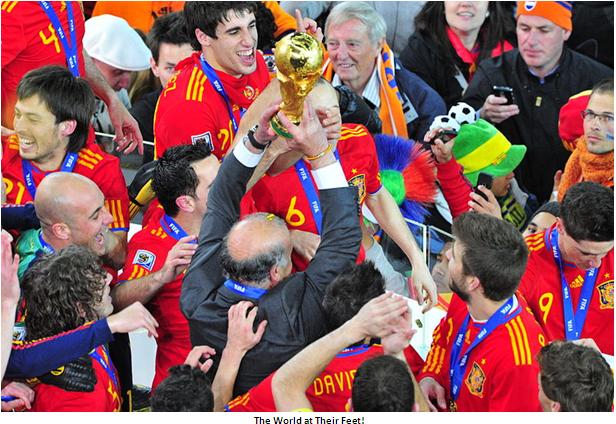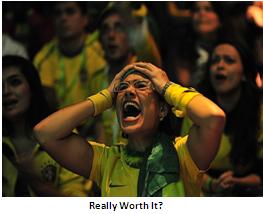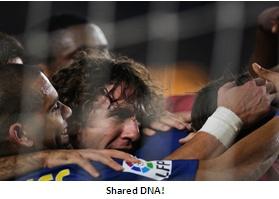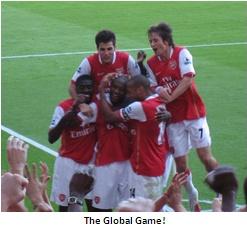The Three Halves and Halves Nots
A few months ago the media was awash with reports that FIFA was toying with the idea of introducing three halves of thirty minutes each in the 2022 Qatar World Cup. Though I couldn’t find any official statement from FIFA confirming this (in fact they had swiftly moved to refute the rumours), I can’t wait for this strategy to be introduced. It may turn out to be one of the most important innovations in football, comparable to the banning of snoods and booking players for taking off their shirt.
For starters, the term “three halves” is path breaking in itself. It can potentially change the entire footballing paradigm where every match, in fact, becomes a match and a half. It is straight out of the Kevin Keegan world of football expressions where there is no bigger honour than being the second best team in the world, where there isn’t anyone bigger or smaller than Maradona. With it, FIFA can scale the marketing heights of Woolworth or Sainsbury’s by offering three matches at the price of two tickets. Besides, with two half time breaks, they must come up with appropriate names for them too. Taking a cue from cricket, the breaks could be named tea and high tea, or supper and dinner depending on when the game is played, and embellished with appropriate sponsorships.
Beyond these obvious marketing and promotional opportunities, there are other ways to leverage the third half to make the beautiful game even more beautiful. The basic game of football has not changed since it started. It has always been played in two halves where two teams, comprising 11 players, fight for a ball. Tournaments like Moretti were a whole new ball game though. Now with three halves, FIFA will be well-equipped to introduce three-way match ups, much like the three-way elimination matches so widespread and popular in professional wrestling. Let us try to understand how it will work. In a match between Team A, B and C – Team A plays Team B, Team B plays Team C while Team C plays Team A in the first, second and third halves respectively. The goal difference for each team over the three halves is computed and the team with the highest goal difference declared the winner. If there is more than one team with the highest goal difference, the points are split. In case of knock-out matches without a clear winner, there are two or three-way penalty shootouts as necessary. Three-way penalty shootouts work in exactly the same way as the three-way match.
The question is what is in it for FIFA, apart from revenue, that is. Well, with three-way match ups of 90 minutes split in three halves, FIFA will be able to increase the number of participating teams from 32 to 48 with zero overhead. This is likely to reduce the chances of global favourites such as England missing the tournament by bowing out in the qualifiers. Besides, with more teams participating, TV revenue will also surge.
However, in the mundane world of domestic and continental football, it will not be justifiable to have three-way matches for the simple reason that to maintain the traditional home and away format, the number of matches will increase beyond control and the schedule will become unmanageable. Nevertheless, an idea as radical and path-breaking as a game of three halves has its advantages. The domestic and continental competitions can continue to be held between two teams, but introduction of the extra half will add value to the player and spectator experience, as well as introduce avenues for new tactical thinking. In the following paragraphs I shall explain how.
One aspect football has not been able to market is the toss. It is such a trivial affair in the game that nobody but the referee is usually bothered about it. However, this third half might just give the toss a new lease of life. Journalists can spend column inches on which way the wind will blow, while broadcasters can perhaps slip in a weather report into the match preview. We may also have a full-fledged pitch report where the venerable experts will pick up blades of grass and blow them in the air, measure the hardness of the soil in various areas, especially the penalty box and provide expert comments. Captains will be interrogated on their decision and blasted or commended on it, and the armchair fan will have another topic to ruminate on. Of course, all the while the camera will silently follow them around to seize every moment that can enhance the drawing room-audience experience. What’s more, it will positively contribute to the employment scenario as meteorologists and geologists will now be added to the entourage of coaches, doctors, physiotherapists, dietitians, nutritionists, psychologists, philosophers and the likes.
Most football fans will agree that time added on due to injuries and substitutions, is fast becoming one of the most intriguing topics of discussion. From waiting for the fourth referee to flash the number of minutes to be added, to anticipating when the referee will decide that enough time has been added and blow the whistle, to Manchester United inevitably scoring a goal well beyond the anticipated end of the half, time added on continues to enthral the football fanatics and divide opinion. What happens during half time is also occupying increased mindshare with pizza fights, handbags and accusations of referees visiting opponent dressing rooms bandied about with increased regularity. The additional half time break will obviously enhance these simple but nonetheless essential appendages to the football experience. Certain managers will also no doubt be delighted to find another window for unleashing the hairdryer to make sure that everyone is on their toes.
The move is also expected to have social and economic impact reaching far beyond the perimeters of the football field. With two half time breaks, the sales of hamburgers, baguettes and sandwiches in the stadium are sure to skyrocket, thus substantially boosting the stadium refreshments business, and creating more employment opportunities. Back home, we can expect a marginal increase in domestic harmony as during the extra break the football fan will perhaps spend a bit more time with his family during the hectic Saturday and Sunday evenings.
However, the question remains, what is in it for the players. There certainly is something. It is not apparent because we, the unforgiving audience, treat them like Roman gladiators and do not spend a moment to consider the trials they undergo on the field. We pulverize them for making simple mistakes without considering that they may be in obvious physical discomfort, the likes of which we seldom need to face. Have we considered that some of the misplaced passes, fluffed clearances, scuffed shots and flapped corners, inability to track back or mark the opponent could have a physiological reason? In other words, have we considered that not every player may be blessed with the industry of Jens Lehmann? So, the three halves will obviously give that additional opportunity to answer nature’s calls, both proactively and reactively, that may have been inhibiting them from playing to their potential. Given that, I must say, every professional footballer will be flushed with delight if FIFA’s new move is implemented.
____________________________________________________________________________________________
Saumyajit Ray can be reached at saumyajit.ray@gmail.com
Title courtesy: Anustup Basu



